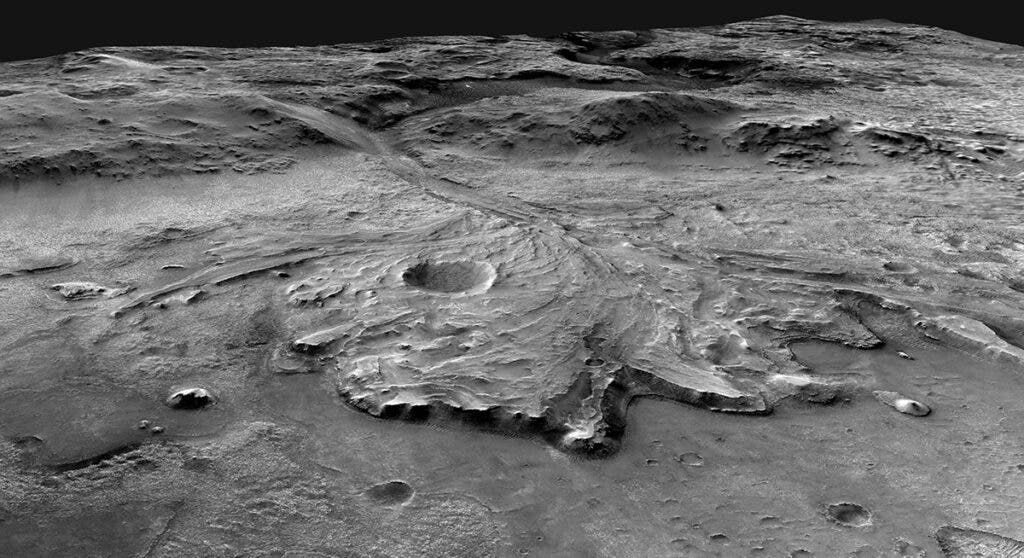An update from NASA showcases a possible route that the Perseverance rover will take during its primary mission on Mars.

Back in mid-February, 2021, the Perseverance rover touched down on the red planet, gearing up for a two-year-long mission. Its first objective is to explore the Jezero crater, where it landed, for evidence of life today or in the past. It may sound complicated, but the mission will mostly consist of the rover taking samples of rocks and soil formed from water-carried sediments billions of years ago.
That being said, nobody was sure exactly where the rover should look. So it beamed us back some photos to help NASA and the US Geological Survey (USGS) decide.
Go left after the red rock
The path NASA chose will take Perseverance through several areas of interest: the cliffs at the center of Jezero (these used to be the edge of a delta), along its surface, up towards a series of possible ‘shoreline’ deposits, and finally over the rim of the crater.
Jezero was selected as a landing site for this mission because this area, in the past, used to be filled with water. It was picked as the most promising candidate for finding any traces of life out of sixty locations as it has several features that researchers believe are remains of ancient, once-habitable environments. As is the case with Gale Crater, where the Curiosity rover landed in 2012, these features formed in the presence of water and may thus contain clues to Mars’ past.
The base of the delta cliffs, for example, marks the outer edge of the area where sediments were deposited by a long-lost river flowing into the crater. Ground control hopes that rocks and sediment here hold fossilized bacteria. Meanwhile, the crater’s rim is the former boundary of an ancient lake and likely still holds evidence of how water levels fluctuated in this lake over the ages. Perseverance will examine them to hopefully determine when the crater first became a lake and, hopefully, how it stopped being a lake.
While it looks small on a video, the patch NASA chose is a few dozen kilometers long — long enough that it will probably take all of Perseverance’s main mission to traverse it all and stop at all points of interest. While the rover is likely going to spend several years exploring Mars, a separate mission will retrieve its samples and shuttle them back to Earth, NASA adds.
Rocks from the Moon helped us better understand how it and our wider solar system formed; the samples from Mars would undoubtedly help as well. But this time, we have a realistic chance of spotting signs of alien life. Understandably, then, researchers are anxious to get their hands and microscopes on some Martian dust and rocks.


